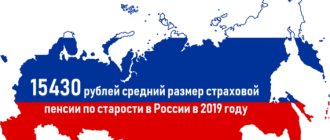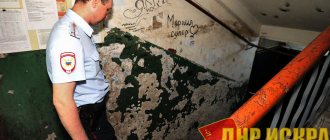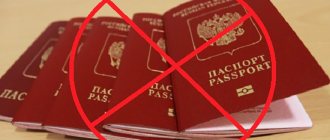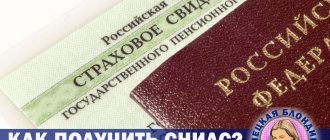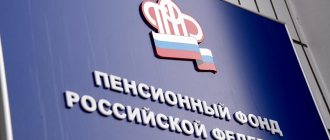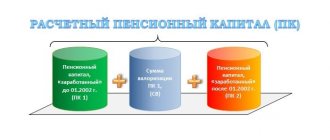Multiple pension reforms have shown that storing your future pension only in the Pension Fund is not entirely interesting or profitable. In some cases, it is even dangerous, since the conditions for calculating the pension and its payment are constantly changing. Because of this, working citizens began to give preference to storing part of their pension in non-state pension funds - NPFs.
The main advantage of this choice was the prospect of growing savings due to the fact that investments work like a deposit, receiving the accumulated amount in full upon retirement, or the possibility of inheriting savings in the event of death, which is not the case with the Pension Fund. Theoretically, everything looks very good, but after 2008, cases of bankruptcy of non-state pension funds began to appear for various reasons. Citizens began to worry about the question: what would happen to their savings? The reasons for bankruptcies of funds were very different: from objective to illegal. There have often been cases where fund management invested clients' money in unreliable assets, which led to the collapse of the fund, or the money was simply withdrawn from the fund, and then the organization filed for bankruptcy. There have been cases where investors in such funds lost their funded part of their pension and received only the insurance “minimum wage”. To reduce the number of such incidents, the government introduced a rule according to which funds must be included in the savings insurance system of the DIA.
Can NPFs be trusted?
Many citizens who have the right to control how their future pension provision will be formed, although they decided to transfer part of the insurance contributions to the funded part, however, left it in the state fund. This position is motivated by many by the fact that savings in the Pension Fund are more secure. Important! By saving money in the Russian Pension Fund, citizens have virtually no influence on the size of their future pension, since the amount of savings increases (is indexed) only within the framework of inflation.
NPFs propose to increase future pensions through investment income, which is generated as a result of investing pension funds of citizens in various projects (mainly shares and other securities). So is there a risk of losing your pension by forming it in a non-state pension fund?
The answer to this question is somewhat ambiguous. There is no need to worry about the amounts that the employer or the citizen himself transfers to the funded portion. Federal legislation provides for comprehensive measures to control the activities of non-state pension funds. In addition, “pension” money cannot be recovered for obligations of a non-state fund that arose for any reason.
However, the pension is transferred to a non-state pension fund to receive income from investments. No fund can guarantee this. The loss of investment income may well occur due to financial problems of a non-state pension fund, but it is also lost, for example, when moving from one fund to another more often than once every 5 years.
In addition to the accumulation and formation of funded pensions, which occurs within the framework of compulsory pension insurance, NPFs actively enter into voluntary pension insurance agreements. State guarantees of the safety of funds do not apply to these savings. In this regard, there is a risk that in the event of bankruptcy or revocation of the fund’s license, they will be lost.
From the above it follows that NPFs can be trusted and placing the funded part of the pension on their accounts does not imply the risk of its loss. At the same time, the termination of the fund’s activities often causes the loss of investment income and funds placed under voluntary pension insurance contracts.
The most common reason for the termination of the activities of the organizations in question is the revocation of the license, which occurs on the initiative of the Central Bank of the Russian Federation.
Bankruptcy of NPF.
Currently, there are funds that have an aggressive policy to attract clients, but are not members of the DIA. Often people do not even know that their savings have already been transferred several times. Everything would be fine, but when transferring money more often than once every five years, all investment income is lost. Transfers are made to NPFs in banks, cell phone stores, and fund employees walk through the entrances and talk about their funds. The translation process is quite simple - just sign the contract.
The agreement can be slipped along with papers for a loan, deposit, contract for cellular communications, etc., so you should always carefully read everything that is signed.
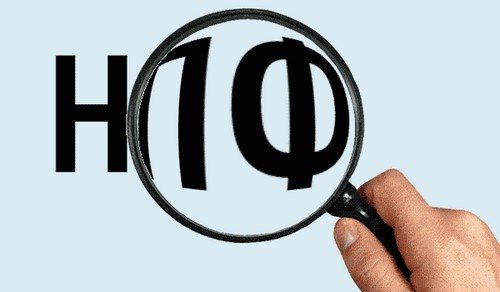
You can find out where the funded part of the pension is now on the State Services website. To do this, it is enough to have a verified account and fill out the SNILS data in your personal account.
All NPFs have licenses issued by the Central Bank of the Russian Federation. The reason for assigning a bankrupt status to a non-state pension fund is the revocation of such a license due to violations found in the work of the fund, poor condition of assets and liabilities, etc.
Over the past couple of years, several dozen funds have curtailed their activities due to bankruptcy or revocation of their license. Their main problem was “poor quality investments.” Further, the financial statements were distorted or provided unreliable by the Central Bank. However, even this did not save the fund. The money invested was lost or burned. Although funds were required to have capital to cover possible losses, this was often insufficient. Risky investments do not scare the funds, because responsibility for pensions lies with the state.
In case of poor financial condition, the Central Bank has the right to withdraw the issued license from the NPF. On an ongoing basis, the Bank of Russia monitors the reliability of each fund and checks the assets in which pension funds are invested.
Despite all the measures, in the event of bankruptcy it often turns out that the amount of savings in the accounts is less than the amount transferred. If the fund is part of the insurance system, then losses to clients will be compensated, but if it is not, then compensation will only be after bankruptcy proceedings.
If bankruptcy is found to be intentional, the founders of the fund may be subject to criminal liability (up to 6 years in prison) if their guilt is proven. All property of these individuals will be auctioned for sale and compensation.
How to find out that a non-state pension fund may have financial problems?
It is necessary to regularly monitor the profitability of the NPF in which the pension account is located. This information can be found on the website of the Bank of Russia, which publishes information on the profitability of NPFs quarterly. But at the same time, experts note that investing pension savings is long-term in nature and this must be understood.
“If your fund shows low returns in any given year, this does not mean that it is experiencing financial problems. But if the fund’s low profitability has been observed for several years, then this is a reason to think about it. NPFs publish their financial statements on official websites. Some funds are already disclosing the composition of their investment portfolios. This information can also be useful for insured persons,” says Erlik.
What are the signs of possible bankruptcy of a non-state pension fund?
If the fund falsifies its statements, then it is impossible to monitor the actual state of the assets. Signs of possible bankruptcy may include a lack of profitability in a retirement account. The funds publish this information quarterly on the Central Bank website. True, it is worth understanding that investing implies a long-term nature, and if at some point the profitability turns out to be low, this is not always a sign of bankruptcy. If losses occur over a long period, then this is a signal that it is better to withdraw savings to a more reliable place.
Too high a return (above 7-10%) also indicates that the fund is pursuing a risky policy and investing money in risky assets. This usually doesn't lead to anything good.
Various rating agencies assign ratings to non-state pension funds based on profitability, reliability, and volume of savings. They should also be reviewed periodically. A decrease in ratings indicates a deterioration in the fund’s condition.
Licensed NPF 2020
- Duration of operation of non-state pension funds in Russia.
- Data about founders and clients (can be found on the tax website in the “Check yourself and your counterparty” service).
- Its reliability (more on this below).
- Openness towards clients (it’s worth looking at the website and looking for mentions in the press).
- Profitability.
- Internal financial indicators: the amount of capital, property and reserves.
- Participation of the fund in the system of guaranteeing the rights of insured persons (this data is available on the website of the Deposit Insurance Agency).
You can also find out the status of your pension account at the Pension Fund branch, which must receive reports without fail. How to pay the contribution Payment of contributions for the savings program stopped in 2020. You can deposit cash to form a non-state pension or under a co-financing program. There are several key criteria that are worth analyzing when choosing :
- volumes of pensions paid: if the fund does not pay the funded part, then it is likely that its clients are too young and have not yet retired;
- own capital and reserves: for example, at NPF Electric Power Industry they amount to almost 4.5 million rubles, at Sberbank - a little more than 5 million, and at Telecom-Soyuz - exceed 8 million;
- participation in the insurance system - you can find a complete list of non-state funds included in the register and excluded from it on the official portal of the Deposit Insurance Agency (www. asv. org. ru/pension/list_npf/);
- ease of use of the company’s website, opportunities for remote communication, friendliness and competence of employees.
Home / Pension / Is there a rating of non-state pension funds and how to choose a non-state pension fund for a future pension 04/02/2020, Sashka Bukashka While we are working, we are accumulating funds for pensions in special accounts. These are the funds that the employer pays to the Pension Fund for each employee - 22% of the salary. And we can manage part of these funds long before we retire, transferring their management to a non-state pension fund (NPF). This can be done only for the savings part, and NPF can be changed annually. For reference: this area is fully regulated by Law 75-FZ on non-state pension funds.
How to choose a non-state pension fund Carefully and carefully. Which NPFs had their license revoked in 2020
Read on the Russia-Ukraine website:
- Collective Letter of Dismissal of an Employee Sample
- Date of Change in Publication Cost on EFRSB
- Job Description of the Construction and Installation Site Foreman
- Fine for Administrative Offense Amount
- Instructions for the Deputy Chief Physician for Medical Services to the Population
Attention!
Due to recent changes in legislation, the legal information in this article may be out of date! Our lawyer can advise you free of charge - write your question in the form below.
The procedure for recognizing bankruptcy
Non-state pension funds have licenses issued by the Central Bank, and the reason for starting the procedure for recognizing financial insolvency is the revocation of such a license. The reasons for this may be different - identified violations in the organization’s activities, a negative balance of assets and liabilities, etc.
As in the case of other legal entities, the bankruptcy of a non-state pension fund necessarily includes two stages: observation and bankruptcy proceedings. Financial recovery and external management do not apply to such organizations.
What to do if a non-state pension fund goes bankrupt?
In the event of alleged bankruptcy, the insured person can transfer accumulated funds from one NPF to another, which demonstrates better financial results. To do this, it is enough to come to the Pension Fund branch at your place of residence or to selected non-state pension funds and write a corresponding application.
“At the same time, you need to take into account that if you change the fund more often than once every 5 years, then with such a transition you risk losing the investment income accumulated in the previous 3-4 years in the previous NPF. Therefore, it is necessary to change the fund ahead of schedule only if it has had very poor financial results for several years,” says Erlik.
What to do if the fund has already gone bankrupt, will the money be returned?
The Deposit Insurance Agency compensates the entire amount of contributions to the savings account. A client of a bankrupt fund needs to go to the website of the Deposit Insurance Agency (DIA). On this website, the DIA promptly posts all the necessary information and step-by-step instructions for clients of non-state pension funds.
Be sure to read it! Benefits for veterans of labor, combat, and WWII in 2020
NPF rating by profitability
To do this, you should pay attention to specially compiled ratings, comparing the indicators of the selected NPF with others. The reliability and profitability indicators of non-state pension funds deserve special attention. If the insured person chooses a non-state pension fund as an insurer, then his funded pension will be formed in this fund.
| Dear visitors! The site offers standard solutions to problems, but each case is individual and has its own nuances. |
| If you want to find out how to solve your particular problem, call toll-free ext. 504 (consultation free) |
At the same time, unlike the Pension Fund of the Russian Federation, the NPF transfers funds to the management of the management company that it chooses, without taking into account the opinion of the insured persons. Pension Funds cannot index pension payments, as the Pension Fund does in relation to pensions.
Both state and non-state funds can increase their savings provision only by investing money. It is worth noting that the result of investing can be either income or loss. after the insured person has the right to issue a payment and apply for it to the fund, the NPF will be obliged to appoint
How does the process work?
If a non-state pension fund has gone bankrupt, an arbitration manager is appointed to consider the case (a temporary manager at the observation stage and a bankruptcy trustee for bankruptcy proceedings).
The appointed specialist will first check the activities of the fund, determine the real financial situation, and then make a conclusion about the legality of the actions of the management and founders of the company. If no significant violations are identified, citizens’ funds are transferred to the Pension Fund of the Russian Federation, and the organization’s property is sold at auction (the funds are used to satisfy creditors’ claims).
In certain cases, NPF clients can also act as creditors.
What should citizens do?
When you find out that the non-state pension fund to which you made regular transfers

the account of the funded part of the pension has been declared bankrupt, there is no need to panic ahead of time, however, it is also not recommended to waste time.
First of all, you need to consult with a lawyer who will study the case and give certain recommendations. You can continue cooperation with specialists of this kind, since they will protect your interests in court, if necessary.
What will happen to the income received?
“As for the investment income that was received when investing pension savings, it is returned to the insured person after the sale of the assets and property of the bankrupt fund,” says Erlik.
What happens to investment income if the fund goes bankrupt?
To receive investment income, savings must be in one fund for 5 years. If you switch more often, you may lose your income. However, if the fund is on the verge of bankruptcy, then there is no point in waiting for income. Here it becomes a priority to withdraw your funds and save the main part. If the financial condition is poor, the fund is unable to accrue income.
NPF licenses on the central bank website
- a section has been added “Reporting on transactions with funds (Instruction No. 3719-U), containing a new reporting form (form 0420001 “Information on the types and amounts of operations with funds of non-credit financial organizations.” This form was put into effect by the Instruction of the Bank of Russia dated 09. 07. 2020 No. 3719-U “On reporting by non-credit financial institutions on transactions with funds.”
dated May 22, 2020 No. IN-05-47/30 Currently, Regulation No. 580-P is undergoing state registration with the Ministry of Justice of the Russian Federation. From 01.10.2020, non-state pension funds and management companies of investment funds, mutual investment funds and non-state pension funds must use the current version of the Program-questionnaire for preparing electronic documents version 2. 16. 3 (hereinafter referred to as the Program-questionnaire) (build 1. 2 91.3 dated September 30, 2020). mandatory standards through the placement of pension reserves by management companies and the investment of pension savings from the NPF “Strategy” in shares and bonds. “With regard to OPS funds (pension savings), we inform you that the funds of the insured persons (clients of the Fund) will be preserved and returned to the Pension Fund of the Russian Federation in the amount provided for by the legislation of the Russian Federation within the established time frame.
- Pensions of Russians: questions and answers
- Interview with the General Director of NPF Soglasie-OPS JSC Alexander Vyunitsky to the PRO BUSINESS TV channel
- “Insurance in points, savings in money, IPK in property.” How will Russians’ pensions be formed in a new way?
- General Director of the Fund Alexander Vyunitsky live on the Korolev-TV channel
- Alexander Vyunitsky about the difference between funded and insurance pensions
- Interview of Andrey Neverov, member of the Board of Directors of NPF Soglasie-OPS JSC, to the 360° Zhukovsky TV channel
- Go and don’t lose: rules and subtleties of compulsory pension insurance
What happens if you decide to terminate the agreement with the NPF?
If the insured person decides to terminate the contract with the non-state pension fund, then in this case part of the savings will be lost.
“If the client decides to terminate the contract and change the insurer, then in this case, upon termination of the contract, the pension fund, which is his previous insurer, will retain part of the investment income. There is a complex chain of calculations here, but most likely this will be the income received for 2016-2017,” says Kasina.
Is it possible to terminate an agreement with a non-state pension fund before bankruptcy?
As soon as the decision is made to leave the suspicious fund, you need to write an application to the Pension Fund about choosing a new fund. Also, when drawing up an agreement with another fund, the application is often generated automatically, and there is no need to go to the Pension Fund. It is important to be in time before the bankruptcy process begins. Applications for transfer to a new NPF are considered by the Pension Fund only in the 1st quarter of each year. Those. If you write an application in June, it will be accepted for consideration only next year. If during this period the current fund is declared bankrupt, then the savings will not have time to transfer to another fund or to the Pension Fund. Here you will need to wait for compensation from the DIA or the liquidation of the fund and the sale of its property.
Between 2012 and 2020 Three dozen NPFs were liquidated. The reasons are approximately the same for everyone: investing in risky assets, inability to meet their obligations. These funds include NPF Family, Transstroy, Professional Independent Fund, Blagoinvest, Vremya, Quiet Don, etc.
External control
for carrying out depositary activities and license dated September 27, 2000.
No. 22-000-1-00010 for the activities of a specialized depository of investment funds, mutual funds and non-state pension funds. Address: 123100, Moscow, Krasnopresnenskaya embankment. , no. 6. Attention to the fund's clients! If the personal data you provided when concluding an agreement with the Foundation has changed, please send the Foundation up-to-date information.
- Pensions of Russians: questions and answers
- Interview with the General Director of NPF Soglasie-OPS JSC Alexander Vyunitsky to the PRO BUSINESS TV channel
- “Insurance in points, savings in money, IPK in property.” How will Russians’ pensions be formed in a new way?
- General Director of the Fund Alexander Vyunitsky live on the Korolev-TV channel
- Alexander Vyunitsky about the difference between funded and insurance pensions
- Interview of Andrey Neverov, member of the Board of Directors of NPF Soglasie-OPS JSC, to the 360° Zhukovsky TV channel
- Go and don’t lose: rules and subtleties of compulsory pension insurance
What will happen to citizens’ pension contributions if the NPF’s license is revoked?
Pension savings held in non-state pension funds are insured. They cannot be seized, and the NPF will not be able to spend them to solve financial problems.
As soon as a NPF’s license is revoked or another force majeure event occurs that leads to the liquidation of the organization, citizens’ pension savings are transferred to the Pension Fund of Russia within 3 months from the occurrence of such an event.
Next, the client determines which pension fund to enter into a new agreement with: state or non-state.
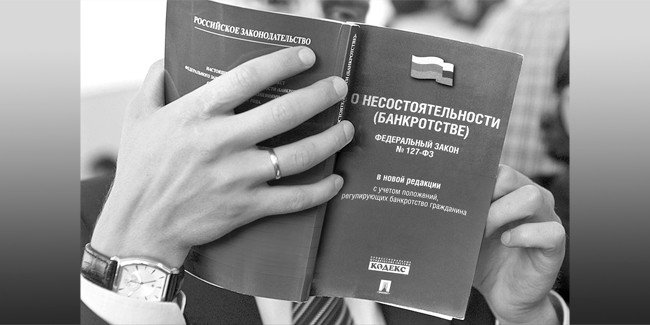
Where do the funds go?
According to the law, if a NPF is declared bankrupt, pension transfers from citizens must be sent to the Pension Fund of the Russian Federation, and the amount should not be less than what the individual contributed to the account.
Next, the citizen can dispose of the funds at his own discretion - leave them in the state pension fund or transfer them to another non-state pension fund.
It often happens that at the time of recognition of financial insolvency, the amount of funds in the insurer’s accounts is less than that which was sent by citizens. If a bankrupt organization is included in the State Insurance Program for the funded part of a pension, then the losses will be compensated.
In addition, the legislation provides for tough measures if the bankruptcy of a non-state pension fund is considered deliberate. The management or founders of the company may be held criminally liable if their guilt is proven. The property of these persons is included in the bankruptcy estate and sold at auction. According to the Criminal Code of the Russian Federation, the maximum penalty for such economic crimes is imprisonment for up to 6 years.
What will happen to savings if a non-state pension fund goes bankrupt?
The issue is still acute, although the law provides for the return of savings back to the Pension Fund (within 3 months after all checks have been carried out and a final decision has been made) or transfer to another NPF (if another fund assumes the obligations of the bankrupt fund). In this case, the legislation protects the rights of NPF clients, so they cannot be lost.
If the fund’s license is revoked, this is considered an insured event and all funds are transferred back to the Pension Fund; however, in practice, only half of the savings reach the state fund. The funds are in no hurry to return the money. They begin to challenge the regulator's decision in the courts, which takes a lot of time. Or the investment turned out to be unprofitable and there is simply nothing to return.
Thus, if the fund goes bankrupt, you can keep your contributions, or at least part of them. As soon as the court makes a decision on the bankruptcy of the fund, the contract between the fund and the client is terminated, funds can no longer be transferred to another fund, and all client applications are no longer considered. The manager must repay debts to clients within 3 months by transferring all their savings to the Pension Fund. Also, the fund's property is sold on a competitive basis, with the proceeds used to pay off debts to creditors.
Be sure to read it! Voluntary pension insurance: differences from mandatory, functions, tasks
What will happen to savings if the NPF goes bankrupt?
In accordance with the current legal norms, after the revocation of the license, temporary managers are appointed, whose responsibility is to transfer all funds to the Pension Fund of the Russian Federation with the subsequent liquidation of the fund as a legal entity.
The funded pension, from the moment the license is revoked, goes to the Pension Fund. In this regard, the citizen must submit an appropriate application to choose another insurer before the end of the calendar year.
If the client of an unreliable fund decides to leave his savings in the Pension Fund, then he does not need to take any action.
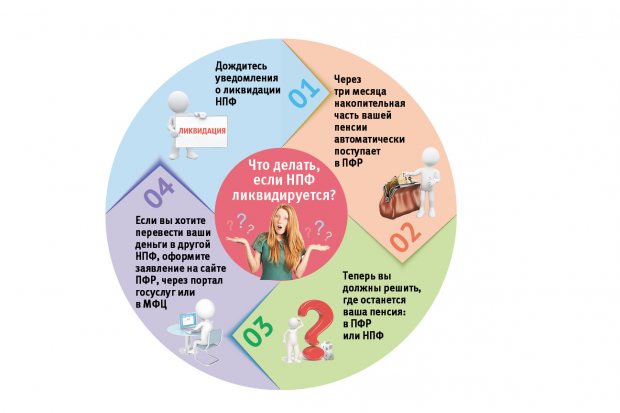
List of NPFs deprived of their license in 2019
Regarding non-governmental organizations that ceased operations due to the fact that, at the request of the client, they did not transfer funds to the new company, here the Pension Fund of the Russian Federation reflects these same clients as remaining in the old funds. Therefore, these clients are guaranteed a transfer of the nominal amount of funds to the Pension Fund, that is, the procedure is the same as in the case if the person did not try to leave the NPF under the leadership of Motylev. To decide where to transfer your savings, you need to know the non-state pension funds included in the list of organizations that guarantee the safety of funds. Control over these organizations was exercised by large businessman Anatoly Motylev, who also owned Globex Bank.
It is worth noting that the latter deprived the state of 80 billion rubles in 2008. At that time, “Globex sharply increased the amount of funds invested by individuals and increased loans that were not secured by collateral. As a result, Globex came into the possession of Vnesheconombank. The formal reason was the incorrect management of pension funds and failure to comply with the state’s instructions that violations must be eliminated.
But the nuances of deprivation of the right to operate are different for each organization. For example, the largest of them is “Sun. Life. The pension did not transfer savings to other companies in cases where citizens wanted to change insurers. Also added to the list of violations was the fact that clients’ money was placed in credit institutions that did not comply with the requirements of the law.
In the first half of 2020, non-state pension funds that plan to continue their activities undertake to become participants in this system. To do this, NPFs submit an application to the Central Bank, which considers it within 120 calendar days. If the company does not exist in the register of participants in the system, a ban on pension provision is imposed on it.
To be sure of the reliability of the NPF you have chosen, you need to go to the website of the Central Bank.
Actually, experts were waiting for these events: after all, none of the listed NPFs passed the Central Bank inspection and were not admitted to the guarantee system. The main question: what will happen to the savings? Will they return to future retirees? According to expert estimates, out of 59 billion of the total amount, about 10-12.5 billion are investment income, and this money will most likely be lost for clients.
The Central Bank will transfer the savings in full, regardless of the state of the funds’ assets. “After the license is revoked, the Bank of Russia must, within 15 working days, apply to the court with claims for the liquidation of these funds,” the Central Bank told RG.
- A – assigned to a stable company with a stable position in the market;
- if two pluses are added to the letter, then the fund will withstand crises and other financial shocks - this is a super-reliable company;
- if there is only one plus next to A, then the company’s reputation is almost impeccable, and the risks are negligible;
- B – this index contains companies that are currently stable, but they do not have absolute confidence to guarantee reliability in the future;
- C – companies with such a reliability indicator are, as they say, on their last legs: it is quite possible that in the coming months (years) their license will be revoked or they will be declared bankrupt;
- D are bankrupt funds;
- E – companies with a revoked license.
Income from investments, funds received under the Co-financing Program and from maternal capital are not subject to warranty obligations. It will be possible to return them only if after the sale of the property of the NPF and the repayment of all debts on pension savings there is still money left. It is these funds that the Pension Fund will direct to you to compensate for income from investments. How to apply for a transfer if a NPF’s license has been revoked If you find yourself a client of one of the failed funds and want to entrust your savings to another fund (not the Pension Fund), then you need to submit an application to the Pension Fund to select a new NPF. The Pension Fund will transfer the funded part of your pension to the account of the institution you choose.
- Procedure for revoking a license from a non-state pension fund
- Application for transfer if the NPF’s license has been revoked
- Procedure if a non-state pension fund does not enter the system of guaranteeing the safety of pension savings
- An example of the procedure in case of revocation of a license from your NPF
- Conclusion
- The most popular questions and answers to them on the procedure in case of revocation of the license of your NPF
- List of laws
- Samples of applications and forms
What is a system for guaranteeing the safety of pension savings?
The Deposit Insurance Agency (DIA) operates a special pension savings guarantee fund. It was created to protect the rights and interests of citizens insured in the compulsory health insurance system. Each NPF has an obligation to transfer funds to this fund. If a system participant’s license is revoked, the DIA will compensate the organization’s clients for lost funds.
Thus, the state guarantees the safety of citizens’ pension savings within the framework of the pension fund.
When can I withdraw the accumulated funds?
The insured person can receive the accumulated money only after reaching retirement age.
Which NPFs had their license revoked in 2019?
The number of people attracted to the fund from St. Petersburg was also not specified.
Reasons for revocation of the license The formal reason was the incorrect management of pension funds and failure to comply with the state's instructions that violations must be eliminated. But the nuances of deprivation of the right to operate are different for each organization.
For example, the largest of them is “Sun. Life. The pension did not transfer savings to other companies in cases where citizens wanted to change insurers.
Also added to the list of violations was the fact that clients’ money was placed in credit institutions that did not comply with the requirements of the law. Financial institutions that are not participants in the system must cease their activities.
The responsibilities of the Central Bank include revoking the license of such NPFs.
The term of the contract of NPF clients can be terminated on four grounds: Upon expiration of the period for fulfilling the obligations of the parties, determined by the contract.
We keep an eye on our savings
You can find out about the revocation of your fund’s license from various sources: for example, this information will appear on the website of the Bank of Russia, the Pension Fund of Russia and the DIA. You can do the opposite: check whether your NPF is listed in the register of valid licenses on the Central Bank website.
You should also remember: if representatives of any organizations or individuals offer you to return savings and reserves from a non-state pension fund with a revoked license, these are scammers. No additional statements are required from a citizen whose NPF has lost its license. Starting from the date of revocation of the license of your non-state pension fund, the Pension Fund of the Russian Federation will become your new insurer in the compulsory pension insurance system.
Revoking a license is a last resort and most likely you will not encounter this situation. In any case, it is important to remember that your pension savings are guaranteed by the state and you should not make any unnecessary moves. Pension savings are money that you will receive in the future. Therefore, it is important to monitor the status of your account and know the year of the last fixing (crediting investment income to the citizen’s personal account). And, of course, we recommend keeping copies of documents in printed or electronic form, which, if anything happens, will help you prove that you were a client of the NPF and are entitled to your money.
You can also transfer your savings from the NPF back to the Pension Fund: in this case, the Russian Pension Fund itself will be the insurer, and the state management company (GMC) VEB.RF or one of the private management companies selected by the Russian Pension Fund through a competition will be responsible for managing savings . It is important that neither the Pension Fund of Russia nor the State Administration of VEB.RF are subject to licensing and, accordingly, cannot lose their license.
Subjects of the collective investment market
dated May 22, 2020 No. IN-05-47/30 Currently, Regulation No. 580-P is undergoing state registration with the Ministry of Justice of the Russian Federation. From 01.10.2020, non-state pension funds and management companies of investment funds, mutual investment funds and non-state pension funds must use the current version of the Program-questionnaire for preparing electronic documents version 2. 16. 3 (hereinafter referred to as the Program-questionnaire) (build 1. 2 91.3 dated September 30, 2020).
The following changes have been made to the Questionnaire Program (build 1. 2. 91. 3 dated September 30, 2020):
- a section has been added “Reporting on transactions with funds (Instruction No. 3719-U), containing a new reporting form (form 0420001 “Information on the types and amounts of operations with funds of non-credit financial organizations.” This form was put into effect by the Instruction of the Bank of Russia dated 09. 07. 2020 No. 3719-U “On reporting by non-credit financial institutions on transactions with funds.”
The questionnaire program (build 1. 2. 91. 3 dated September 30, 2020) for the specified participants in the information exchange is available for download on the Bank of Russia website in the section “Financial markets / Personal accounts and reporting / Reporting of collective investment market entities / Programs for work with electronic documents / Questionnaire program for preparing electronic documents (reporting of collective investment market participants)”, as well as in the Personal Account of a financial market participant. Before installing the current version of the Questionnaire Program, you must remove from your computer all previously installed versions of the Questionnaire Program (Start - Control Panel - Programs and Features) 02.10.2020 02.11.2020 02.11.2020 02.11.2020 02 11.2020 02.11.2020 02.11.2019 Key performance indicators of joint-stock investment funds
Key performance indicators of mutual investment funds
Information on the activities of the Pension Fund of the Russian Federation, the state management company and private management companies for compulsory pension insurance
Key performance indicators of non-state pension funds
Lists of credit institutions where funds for pension savings and savings for housing provision for military personnel can be placed are posted in the section as of 11/01/2019
Examples of bankrupt non-state pension funds
Today, 34 non-state pension funds are in the process of liquidation, the total amount of pension savings in which is over 100 billion rubles.
In 2020, the license of one of the largest non-state pension funds in Russia, Blagodenstvo, was revoked. According to the regulator, the revocation of the license was provoked by non-compliance with the law “On Non-State Pension Funds”. The license was revoked for repeated violations by the NPF in distributing, providing or disclosing information.
In the same year, a large NPF from Ulyanovsk-Povolzhsky launched the process of self-bankruptcy. The main reason was high competition and non-compliance with new legislation. NPFs had to completely change their work and increase their authorized capital in accordance with the law or close down.
In 2020, the license of NPF Strategy, which operated primarily in Perm, was revoked. Then CEO Pyotr Pyankov was accused of embezzlement of the pension fund, legalization of criminally obtained property, providing false information, etc. In the process of forced liquidation of the NPF Strategy DIA revealed the insufficiency of the total property and assets to satisfy all the claims of creditors. The total number of depositors of this organization exceeded 130 thousand people.
A noteworthy case is that of Anatoly Motylev, who was the owner of 7 non-state pension funds whose licenses were revoked (“Sun. Life. Pension.”, “Protection of the Future,” “Sunny Time”), etc. For example, the largest Motylev Foundation is “The Sun. Life. Pension” was deprived of its license for frequent violations of the law on non-state pension funds. In particular, he did not fulfill his obligations for the timely transfer of funds, did not comply with the instructions of the Central Bank of the Russian Federation to eliminate current violations, placed money in assets that did not meet the requirements of the Central Bank, etc.
List of non-state funds whose license has been revoked
The first non-state pension funds began to appear around the mid-90s, but they did not yet participate in the compulsory pension system. After citizens were allowed to transfer pension savings to NPF accounts, control over the latter’s activities increased significantly. The Central Bank of the Russian Federation annually due to their failure to comply with legal requirements.
The largest organizations that have closed in recent years are:
- "Power";
- "Sun. Life. Pension";
- "Protecting the future";
- "Sunny Time";
- "Adekta-Pension";
- "Povolzhsky";
- Mechel-Fond;
- "Siberian Capital".
The activities of these organizations with revoked accreditation have now been discontinued.
The Central Bank revoked the license of NPF "Strategy"
The Bank of Russia announced the cancellation of the license of NPF “Strategy”.
As of October 1, 2020, the pension reserves of the NPF “Strategy” amounted to 2.6 billion rubles, pension savings – 4.1 billion rubles, its clients were 78.2 thousand insured persons, participants – 68.7 thousand people. The Foundation's branch in Perm informs on its website that its activities have been suspended since March 16. For all questions please contact: st.
Sovetskaya, 72. Within three months, all mandatory pension savings will be transferred to the Pension Fund of the Russian Federation.
The basis for the application of extreme measures of influence were violations of the requirements of the Federal Law “On Non-State Pension Funds”, as well as repeated violations during the year of the requirements for the dissemination, provision or disclosure of information provided for by federal laws and regulatory legal acts of the Russian Federation adopted in accordance with them.
The Bank of Russia also reported that it had established the fact of manipulation of the markets for shares of the closed mutual fund Rodnye Prostory and bonds of Rotor LLC, Zhilstroy, STP at trading on the MICEX Stock Exchange in the period from January 2013 to April 2020. These actions were committed with the aim of artificially inflating the value of assets on the balance sheet of the NPF, and
“indicate an intention to mislead investors and the regulator regarding the price and liquidity of shares and bonds in order to achieve the NPF “Strategy”
mandatory standards through the placement of pension reserves by management companies and the investment of pension savings from the NPF “Strategy” in shares and bonds. “With regard to OPS funds (pension savings), we inform you that the funds of the insured persons (clients of the Fund) will be preserved and returned to the Pension Fund of the Russian Federation in the amount provided for by the legislation of the Russian Federation within the established time frame.
At the same time, the insured persons will continue to form a funded pension in accordance with the exercised right to choose a pension option.
At the same time, demands for payment of NGO funds (pension reserves) can be submitted in writing to the temporary administration for managing the Fund,” the official release of the “Strategy” says.
What to choose: Pension Fund or Non-State Pension Fund?
After the pension reform, citizens have the opportunity to choose. Some transferred their funded part of their pension to a non-state pension fund, others chose to remain in the state fund. In fact, there is nothing wrong with transferring savings to NPFs. It is important to choose a reliable fund. The profitability in it will be higher than in the state fund. Also, upon retirement, you can receive your savings in one sum, and if you do not live until retirement, they will be inherited. Given the instability in the market, it makes sense to keep money in the state fund, but here it will no longer be inherited, and the accumulated amount will be divided into a 19-year survival period and will be paid out every month towards the main pension.
Sources
- https://pfrp.ru/faq/bankrotstvo-npf.html
- https://aif.ru/money/mymoney/chto_delat_esli_vash_npf_obankrotilsya
- https://mobile-testing.ru/bankrotsvo_npf/
- https://bankrothelp.ru/yur-lica/bankrotstvo-negosudarstvennykh-pensi.html
- https://zen.yandex.ru/media/investor100/vozmojnoe-bankrotstvo-npf-chto-budet-dengami-grajdan-5ba4b5cc3c1adb00aaf058ef
- https://Pensiya.Veb.ru/nakopitelnaja-pensija/chto-delat-esli-u-npf-otozvali-licenziju/
[collapse]
Who is better to transfer pension savings in 2020?
The fund that has the most assets and the largest client base is unlikely to be liquidated - at least, such cases have not yet happened in history. So, when a person transfers his funds to a management company or non-state pension fund, the following happens to his money: Today, for every person, this issue is the most painful, since over the course of a year he receives a huge number of offers from various funds. Confidence in the future is necessary for every person.
This also applies to a prosperous old age, although, of course, few people think about it. But almost all of these people are faced with a choice about where it is better to transfer their pension funds. Today, for this choice, there is a large list of non-state pension funds advertising their services, and it will be very difficult for an uninformed person to figure it out, and in view of the current situation regarding funded pensions, everyone will have to take care of it on their own. What will happen if you do not choose any organization and your 6% funded pension remains in the Pension Fund? Under these conditions, from the beginning of 2020, the funded part of the pension is automatically reset to zero by decision of the state, in other words, nothing remains of 6% and everything goes into the insurance part.
It follows from this that you no longer receive any interest; it goes towards repaying the Pension Fund’s debt. And there are no guarantees that when you retire, you will receive your funds. The downside is that the insurance part of the pension is not inherited, and under appropriate circumstances, your relatives will not be paid anything. If an early application is submitted, the insured person risks losing investment income
. Moreover, in the event of a loss from investing funds, the result obtained will be recorded and the amount of savings will decrease.
Thus, early transition has two significant risks - non-payment of investment income and lack of a guarantee for maintaining the “face value of the paid contributions. Something looks too much like the same “Hopper”. Yes, there is a risk of losing your investments and the main danger of non-state pension funds. Unfortunately, the recent situation is not very encouraging for investors. Thus, in 2016, the Central Bank of Russia revoked the licenses of four non-state pension funds with rather sonorous names - “Sun.
Life. Pension", "Savings Fund Sunny Beach", "Savings", "Protection of the Future". When weighing the pros and cons of funds, relative to their percentage, it is worth remembering that the state annually indexes the insurance pension guaranteed , and the funds of the funded pension increase due to the profitability of investing in the financial market, which can lead to a loss .
We can also conclude that savings stored in the Pension Fund are slowly but surely increasing, and in non-state pension funds the level of profitability depends on the success of the investment.
